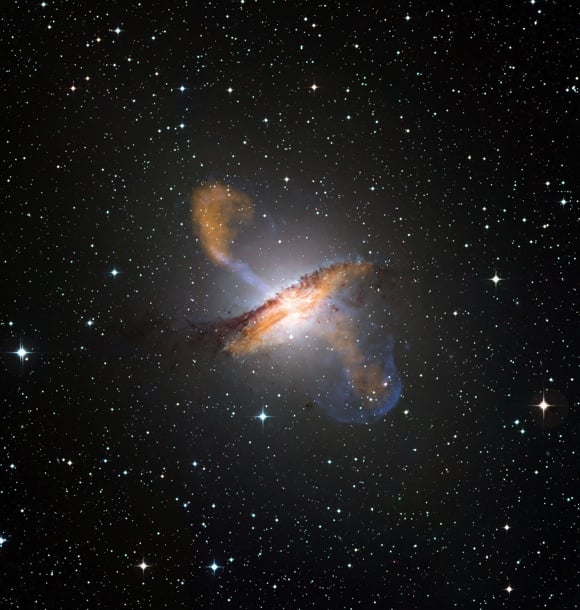This article is more than 1 year old
Ground control to 2014: A year in Space
Four-legged landings and history-making comet-chasers
Enter the DRAGON
But it wasn't all bad news for private space firms. SpaceX also unveiled the Dragon V2 this year, the manned rocket he hopes will set humanity on the path to Martian colonisation.

AWESOME SPACE PIC 4: Long-exposure Hubble Space Telescope image of massive galaxy cluster Abell 2744 (foreground) and some of the faintest and youngest galaxies ever detected in space. Credit: NASA/ESA/J.Lotz, M.Mountain, A.Koekemoer/STScI HFF Team
The V2 can transport up to seven ‘nauts, with an improved heat shield capable of withstanding temperatures up to 5,000° Fahrenheit (2,760°C) and four legs for soft landings instead of ocean drops, which will ensure the capsule can be reused. The ship can land even if two out of its four engines fail, and it can deploy parachutes if it detects anything wrong with the propulsion system before it comes in to land.
“You will be able to land anywhere on Earth with the accuracy of a helicopter,” Musk boasted at the unveiling. “That is how a 21st century spaceship should land.”
The craft has already won one of two contracts with NASA to ferry future space-folk to and from the ISS. The other contract went to Boeing, which reckons its CST-100 capsule will be able to make the trips for $4.2bn, while SpaceX gets $2.6bn.
Both firms will have to pass safety standards as high as those set for the space shuttle, deliver a single NASA astronaut to the ISS and get him or her back safely, and then carry out up to six delivery flights of four crew and accompanying cargo.
But SpaceX will be looking to get some of the way there early next year, with the first test landing of the Falcon 9 on a floating platform with the four leg system during its fifth cargo resupply mission to the ISS. The potentially game-changing development for space travel was supposed to happen in December, but was put off until January 6 so SpaceX could check out some issues that came up during a static fire test.
If the firm pulls it off, it will be the first time an expensive first stage rocket can be checked out, refuelled and used again rather than being tossed away into the ocean as they have been since humanity first boldly stepped into space.

AWESOME SPACE PIC 5: Particle jets belching from the supermassive
black hole at the centre of Centaurus A. Credit: ESO/WFI (visible);
MPIfR/ESO/APEX/A.Weiss et al. (microwave); NASA/CXC/CfA/R.Kraft et al. (X-ray)
Meanwhile, the commercial space firm backed by Amazon founder Jeff Bezos is also hoping to get in on the action. Blue Origins has signed a deal with the United Launch Alliance (ULA) to develop a new, US-built rocket engine for future space missions. Under the new partnership, ULA will help fund development of the BE-4, the next generation of Blue Origin's rocket technology.
And Boeing is hoping that the CST-100 will do more than win NASA contracts, the firm is also aiming to refit the model as a potential space tourism craft as well. The firm released a concept design that's basically a six-seater with soothing mood lighting, Wi-Fi (probably) and personal storage space. The floating seat would be the domain of the pilot, leaving the six passengers below to enjoy the view.
This year's oddball space venture was Lunar Mission One, an attempt to send an unmanned lander to the South Pole of the Moon, funded in part by Kickstarter. The British non-profit has managed to crowdfund the first £600,000 it needs to send the probe, which will be used to drill 20-100m deep into the Moon to analyse lunar rock that's around 4.5bn years old for the first time. The craft will also have the rather strange task of ferrying photos and other digital media from backers, along with human hairs, which it will bury in the resulting hole. The organisation hopes that selling space in the digital memory boxes and commercial and public backers will top up the coffers to make the mission possibly in 2024.
And finally, this year we said goodbye to one ongoing mission and hello to another one. NASA's Lunar Atmosphere and Dust Environment Explorer (LADEE) Moon mission, which had been orbiting around the Earth's satellite since November last year, was sent to its fiery death.
LADEE had been analysing its scant atmosphere to solve one of the odder mysteries of our natural satellite – the early morning glow on the planetoid's surface observed by the Apollo 17 mission. The probe's primary mission was to discover if dust in the Moon's tenuous atmosphere is to blame for the phenomenon.
The preliminary results of LADEE's efforts showed that the Moon is much dustier than first thought and it's that dust that causes the glow on the surface as the Sun rises, as its light is diffracted by the particles.
The LADEE probe was designed for 100 days of observations, and NASA used the last of its fuel to send the probe into a kamikaze dive into the lunar regolith to avoid cluttering orbital paths around the Moon. LADEE's impressive end saw it smash into the surface at a speed of 3,600 miles per hour – about three times the speed of a high-powered rifle bullet.
NASA also woke up its New Horizons craft, prodding the probe out of hibernation ahead of its up-close-and-personal look at Pluto and its moons.
The spaceship has spent nearly nine years traversing the cosmos to get to the outer reaches of our Solar System and explore the dwarf planet and its satellites at close quarters.
"This is a watershed event that signals the end of New Horizons crossing of a vast ocean of space to the very frontier of our solar system, and the beginning of the mission’s primary objective: the exploration of Pluto and its many moons in 2015," enthused Alan Stern, New Horizons principal investigator from Southwest Research Institute. ®
